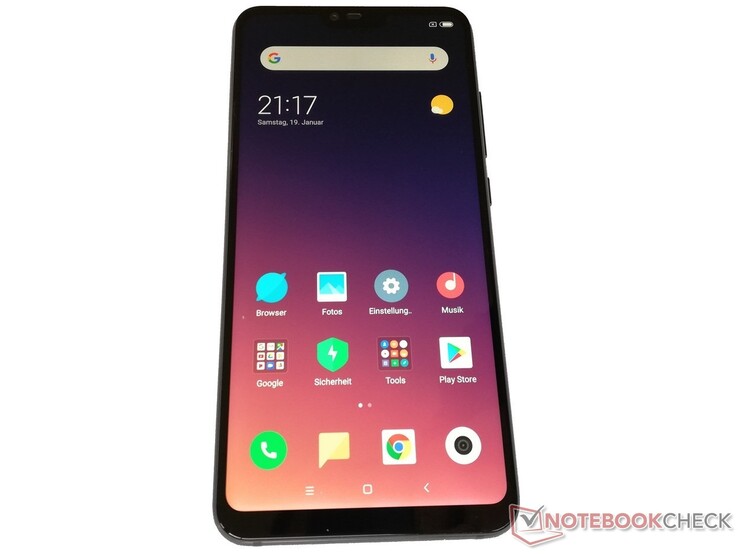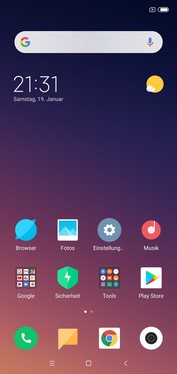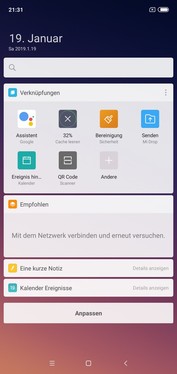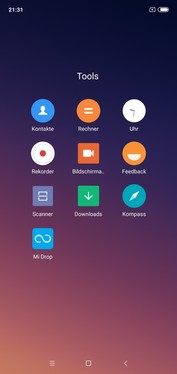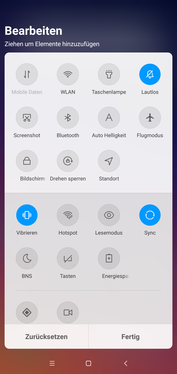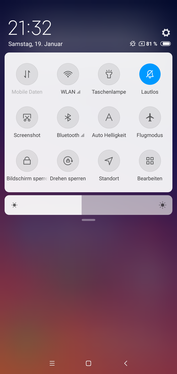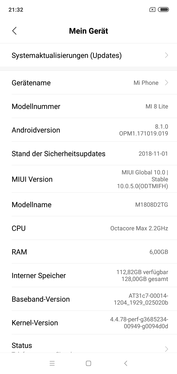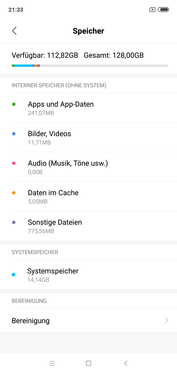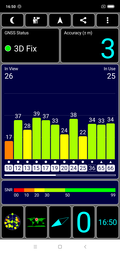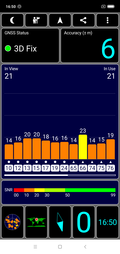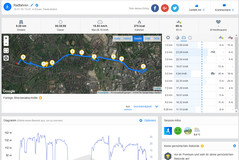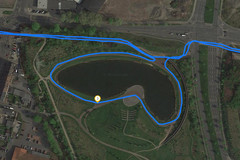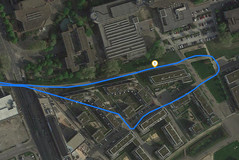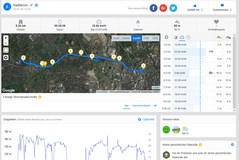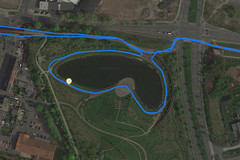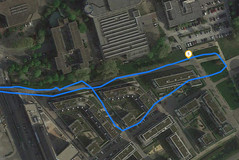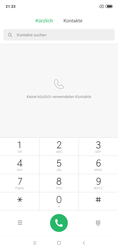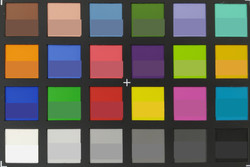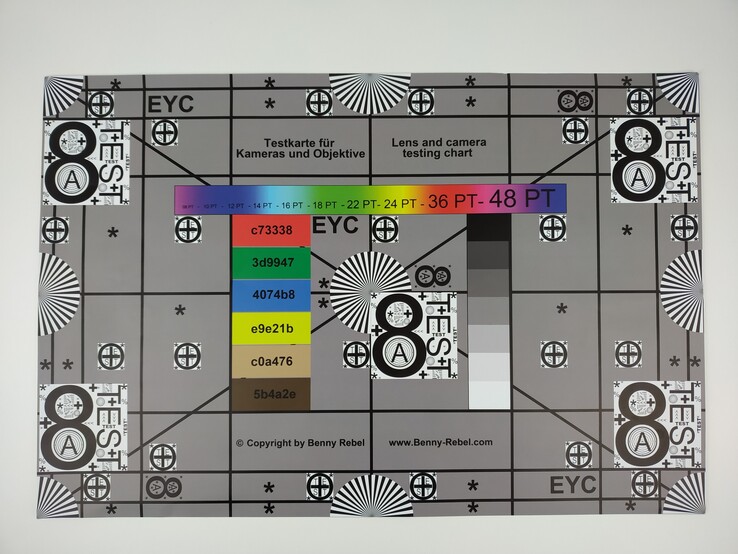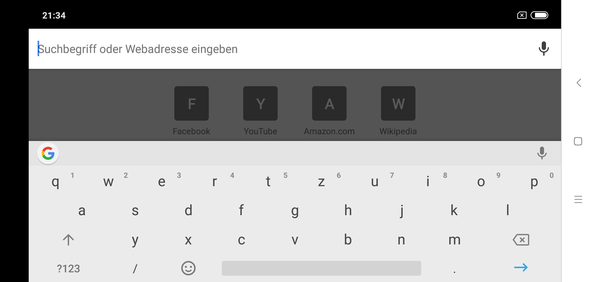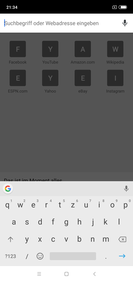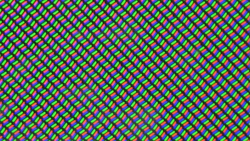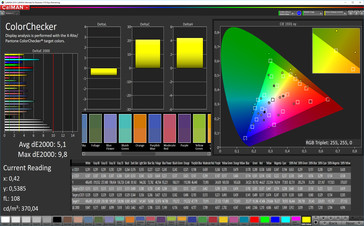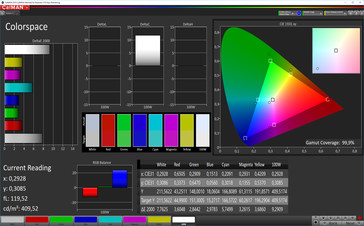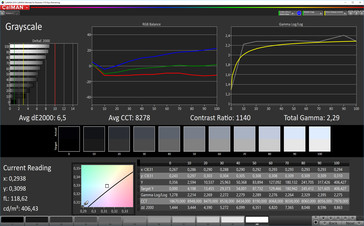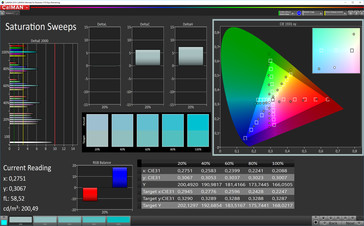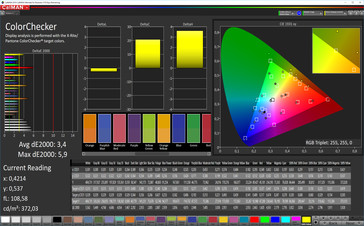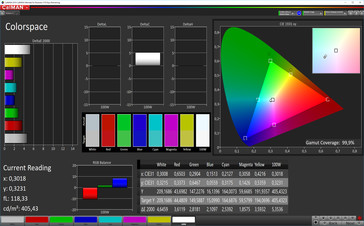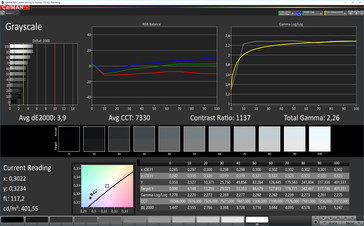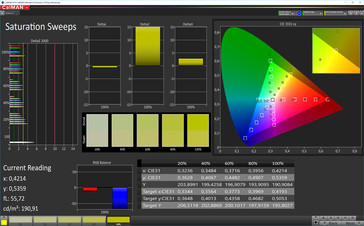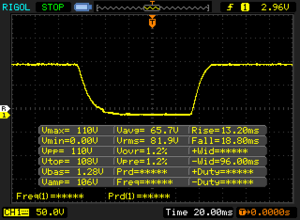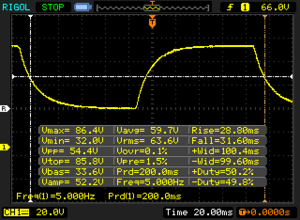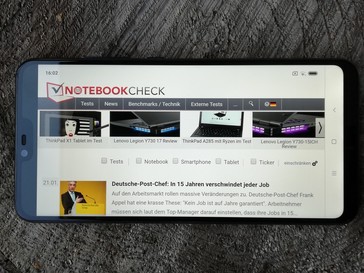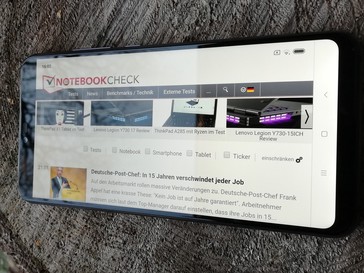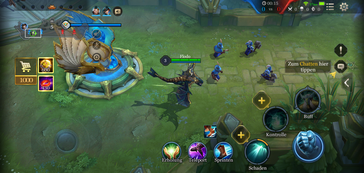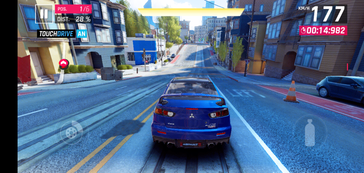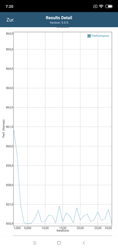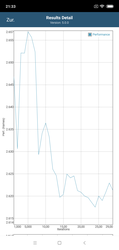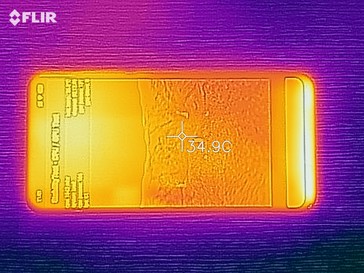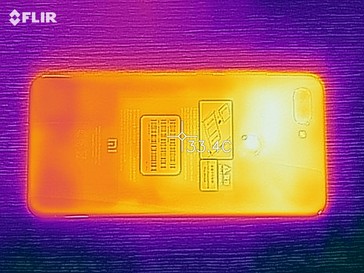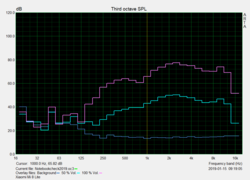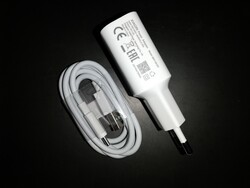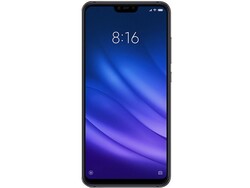Xiaomi Mi 8 Lite Smartphone Review
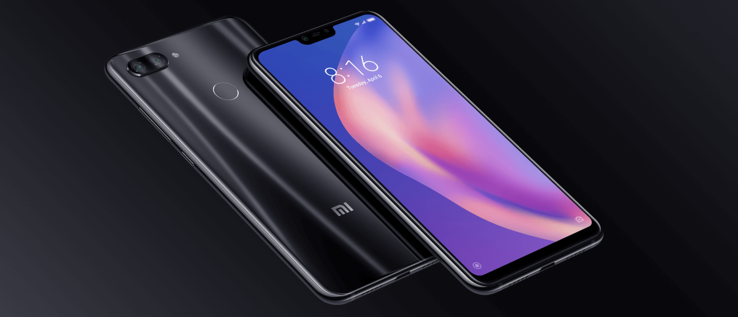
In our review of the Xiaomi Mi 8 Explorer Edition, the flagship smartphone from the Chinese manufacturer received an almost unreserved recommendation. Like many other manufacturers, Xiaomi does not rely solely on the top-end model and uses the designation “Lite” for the cheaper variant of its high-end smartphone.
Our current review device is the Xiaomi Mi 8 Lite, which offers a little less performance than the Mi 8 Explorer Edition. Moreover, it forgoes the Infrared Face Unlock feature. However, the Mi 8 Lite gets a very good 24 MP front-facing camera and the rest of the hardware is also quite good for a mid-range smartphone.
The combination of the Qualcomm Snapdragon 660 and the Adreno 512 creates a very responsive system. Furthermore, the Mi 8 Lite features 6 GB of RAM and 128 GB of eMMC flash storage. This is why the Xiaomi smartphone offers enough performance for most modern applications. Additionally, with the price tag of 270 Euros (~$307), the smartphone offers a very good price-to-performance ratio. The variant with 4 GB of RAM and 64 GB of internal storage costs 30 Euros (~$34) less.
While there is still no official European release date for the Xiaomi Mi Mix 3 and Mi Max 3, other smartphones from the Chinese manufacturer such as the Redmi 6, Redmi 6A and the Note 6 Pro can be easily acquired in German retail stores. The same applies to the Mi 8 series, which is available in Germany with the global ROM running Xiaomi’s propriety launcher known as MIUI 10.0.
In our review, we compare the Xiaomi Mi 8 Lite with other smartphones with a similar price tag and hardware. The competing devices include: The Samsung Galaxy A7 (2018), HTC’s U12 Life, the Huawei P Smart (2019), Umidigi’s Z2 Pro and the Nokia 5.1 Plus.
Case - Xiaomi smartphone with a glass back
The case of the Mi 8 Lite is made of glass and aluminum, which is why the smartphone looks very premium. The Mi 8 Lite is very well-built and feels nice in the hand. However, because the top and bottom sides protrude slightly (by about one millimeter), the screen looks like it has been glued onto the sides. The smartphone is available in two main color schemes: “Midnight Black” and “Aurora Blue”. The back of the Mi 8 Lite comes with a shimmering effect.
The physical buttons are located on the right side. They sit firmly in their housings. The nanoSIM/microSD card tray is found on the left side. There is a charging port at the bottom of the smartphone. The dual-camera system is located on the back in the left top corner and the fingerprint sensor is located in the middle of the top third of the smartphone.
Connectivity - Low-priced Android smartphone with good hardware
The Xiaomi Mi 8 Lite features the Qualcomm Snapdragon 660, Adreno 512, 6 GB of RAM, and 128 GB of eMMC flash storage. The storage space can be expanded with the help of a microSD card. However, if you choose to use a microSD card, then you will lose the dual-SIM functionality. The Mi 8 Lite also comes in a version with less RAM (4 GB) and less storage space (64 GB).
Data can be transferred through a wired connection with the help of the USB Type-C port. The USB port operates at USB 2.0 speeds. It can also be used for charging and features support for Quick Charge 3.0. Unfortunately, the Mi 8 Lite only supports L3 DRM, which means that HD content from various streaming services is not supported.
Software - Stable release of MIUI 10.0 for Europe
The Xiaomi Mi 8 Lite runs Android 8.1. The security patches were last updated in November of 2018. The Mi 8 Lite uses a proprietary launcher known as MIUI Global 10.0. It is very similar to stock Android. The home screen has a few different icons and offers tools such as the calculator, voice recorder, scanner and more. The settings menu has been customized much further. Here, features and functions are sorted in a different way. Despite all this, seasoned Android users should have no trouble navigating through the settings menu. Facebook is the only third-party preinstalled app. It can be easily uninstalled.
In everyday use, the Xiaomi Mi 8 occasionally requires an Internet connection, if it is not already available. For example, the apps that you install manually are checked by a cloud-based antivirus program. Users are also occasionally asked to rate Xiaomi apps. This happened to us while we were using the file manager. Moreover, certain options in the settings menu are grayed out until you insert a SIM card. You also need to create a Mi account to change certain settings.
Communication and GPS - Mi 8 Lite with fast LTE and Bluetooth 5.0
The Xiaomi Mi 8 Lite supports the following mobile communication standards: GSM, 3G and LTE. The LTE module operates at Category 13 speeds (download: 600 Mb/s, upload: 150 Mb/s). We did not encounter any reception problems during our review. Functions such as VoLTE and Wi-Fi calling can be found in the settings menu by searching, but they are grayed out. At the time of writing this review, we do not know whether or not these functions will be made available via a future software update. Moreover, these functions should also be supported by your network provider. Both SIM cards can operate in 4G networks.
For short-distance communication, the Xiaomi smartphone relies on NFC, Bluetooth 5.0 and Wi-Fi. The Wi-Fi module supports the following wireless standards: a, b, g, n and ac. It also supports WiFi-Direct and WiFi-Display. In our Wi-Fi test, the Xiaomi Mi 8 Lite achieves a data reception speed of 356 Mb/s and a data transmission speed of 285 Mb/s. Our review device performs just as well as other competing devices and actually manages to land the top spot in our comparison chart. However, when it comes to transmission data speeds, the Xiaomi smartphone fails to take first place.
| Networking | |
| iperf3 transmit AX12 | |
| Umidigi Z2 Pro | |
| Samsung Galaxy A7 2018 | |
| Nokia 5.1 Plus | |
| Xiaomi Mi 8 Lite | |
| HTC U12 Life | |
| Huawei P Smart 2019 | |
| iperf3 receive AX12 | |
| Xiaomi Mi 8 Lite | |
| Nokia 5.1 Plus | |
| Umidigi Z2 Pro | |
| HTC U12 Life | |
| Samsung Galaxy A7 2018 | |
| Huawei P Smart 2019 | |
We use the GPS Test app to examine how well the Xiaomi Mi 8 Lite does when it comes to geolocation. The Xiaomi smartphone supports GPS, AGPS, GLONASS and Beidou. Outdoors, the Mi 8 Lite has a margin of error of about three meters. Indoors, the margin of error rises to eight meters.
On our obligatory bike ride, the Mi 8 Lite is compared to our reference-grade navigator Garmin Edge 500. The route that we took was not mapped very well on the Android smartphone. At certain points, the route is mapped very well, but at other points the route is recorded very haphazardly. Some portions of our route were not recorded at all. This is why the Mi 8 Lite can only be used as an occasional navigator.
Telephony and Call Quality - Good connection with the Xiaomi Mi 8 Lite
The Xiaomi Mi 8 Lite comes with a proprietary phone app. It offers direct access to the dial screen. There is also a second tab, which allows easy access to contacts. In the settings menu of the phone app, you can block contacts, change the ringtone and do much more.
The Mi 8 Lite provides a very good call quality. The voices on either end of the call sound loud and clear. The background noise is filtered out successfully and the voices are reproduced without any distortions.
Cameras - Mid-range smartphone with a good dual-camera system
The camera on the back of the Xiaomi smartphone has a 12 MP sensor with an f/1.8 aperture and a pixel size of 1.4 µm as well as a 5 MP sensor from Samsung known as the S5K5E8 with an f/2.0 aperture and a pixel size of 1.12 µm. The 24 MP front-facing camera features the image sensor from Sony (IMX 576) and has an f/2.0 aperture and a pixel size of 1.8 µm. It takes well-detailed selfies with good color reproduction. Numerous AI functions, which range from skin smoothing and eye-enlargement to virtual make-up, allow further customization of images. Besides various color filters, there is also a special portrait mode that can be activated to produce images with a blurred background, which makes objects in the center appear more prominent.
The front-facing camera does not offer any manual customization. In the settings menu of the camera app, users can adjust the contrast, saturation and sharpness with the help of sliders, each of which offers seven levels of customization. You can also turn on and off HDR and general AI functions as well as set a timer on the main camera screen.
The main camera of the Xiaomi Mi 8 Lite takes good panoramic shots, which only become somewhat grainy at high zoom levels. Colors appear realistic and the image looks a little too dim when compared to our DSLR. In close-up shots, the main camera surprises with a lot of detail, great colors and good contrast. In low-light conditions, the camera manages to capture objects with an acceptable brightness. However, the image turns out grainy and the objects themselves are hard to tell apart. In Pro mode, you can customize image quality even further. Here you can change the following settings: white balance, focus, shutter speed, and exposure. Plus, you can apply various color filters, enable HDR as well as AI functions and set a timer.
The camera app of the Mi 8 Lite draws a distinction between short videos with a length of up to 10 seconds and long video, the length of which is only limited by the amount of available storage space. While short videos can only make use of color filters, the long videos can take advantage of such features as Time Lapse and Slow Motion. AI enhancements can also be used while filming. In the settings menu, you can choose between 1080p60 and 2160p30. The high frame-rate mode allows shooting video at 720p120, 1080p120 as well as 720p240.
We use the X-Rite ColorChecker Passport tool to assess the color accuracy of the Xiaomi Mi 8 Lite’s camera. Most of the colors appear a little overbrightened, including gray tones.
We examine the color reproduction of the Xiaomi smartphone under controlled lighting conditions. Fine details and structures are well-reproduced and do not appear grainy even at high zoom levels. However, the image appears a little washed-out in the lower edges.
Accessories and Warranty - Protective case and USB-C to 3.5-mm headphone jack adapter in the box
The box contains a USB charger with an appropriate USB Type-C cable, USB-C to 3.5-mm headphone jack adapter, plastic protective case and a SIM/microSD card ejection tool. There are no other accessories that were specifically designed for the Mi 8 Lite by Xiaomi. However, the Chinese manufacturer offers many accessories, such as headphones and power banks that are compatible with our review device, on its website.
The Mi 8 Lite has a 12-month warranty. In Germany, there is also the vendor's warranty. To learn more about this, please see our Guarantees, Return policies and Warranties article for country-specific information.. If you are interested in importing a smartphone from China, then you should check out our article that deals with this subject.
Input Devices and Handling - Xiaomi smartphone with a fast fingerprint sensor
The Mi 8 Lite comes with Google’s standard keyboard known as GBoard. It offers a comfortable key size and is easy to type on in both landscape and portrait modes. The display responds to inputs reliably and without any delays. The surface of the touchscreen is very smooth, which is why drag-and-drop motions do not present too much of a problem. The motion sensor reacts to the movements of the smartphone very reliably and adjusts the screen content to the correct orientation without any problems.
There is a fingerprint scanner on the back of the Mi 8 Lite. It unlocks the smartphone quickly and reliably.
Display - 6-inch touchscreen with average brightness
The IPS display of the Xiaomi Mi 8 Lite measures 6.26 inches diagonally, has a native resolution of 2280x1080 and it comes in the 19:9 aspect ratio. With the average brightness of 389 cd/m² and the brightness distribution of 85%, the Chinese smartphone lands a spot in the middle of our comparison chart. With the ambient light sensor engaged, we measured a peak brightness of 420 cd/m². In the realistically oriented APL50 test, the smartphone managed to achieve 412 cd/m².
During our measurements, we determined that the smartphone uses pulse width modulation for brightness control. The display flickers with a frequency of 2358 Hz at 18% brightness and below. Because of such a high frequency, even susceptible individuals should not experience any adverse effects such as headaches and eyestrain.
| |||||||||||||||||||||||||
Brightness Distribution: 85 %
Center on Battery: 421 cd/m²
Contrast: 1276:1 (Black: 0.33 cd/m²)
ΔE ColorChecker Calman: 3.4 | ∀{0.5-29.43 Ø4.77}
ΔE Greyscale Calman: 3.9 | ∀{0.09-98 Ø5}
99.9% sRGB (Calman 2D)
Gamma: 2.26
CCT: 7330 K
| Xiaomi Mi 8 Lite IPS, 2280x1080, 6.3" | Huawei P Smart 2019 IPS, 2340x1080, 6.2" | Umidigi Z2 Pro IPS, 2246x1080, 6.2" | Samsung Galaxy A7 2018 Super AMOLED, 2220x1080, 6" | HTC U12 Life IPS, 2160x1080, 6" | Nokia 5.1 Plus IPS, 1520x720, 5.8" | |
|---|---|---|---|---|---|---|
| Screen | 19% | -51% | 42% | -40% | -8% | |
| Brightness middle (cd/m²) | 421 | 458 9% | 479 14% | 570 35% | 468 11% | 513 22% |
| Brightness (cd/m²) | 389 | 440 13% | 466 20% | 565 45% | 452 16% | 502 29% |
| Brightness Distribution (%) | 85 | 85 0% | 73 -14% | 93 9% | 90 6% | 89 5% |
| Black Level * (cd/m²) | 0.33 | 0.35 -6% | 0.27 18% | 0.62 -88% | 0.36 -9% | |
| Contrast (:1) | 1276 | 1309 3% | 1774 39% | 755 -41% | 1425 12% | |
| Colorchecker dE 2000 * | 3.4 | 1.4 59% | 8.2 -141% | 1.5 56% | 6.09 -79% | 5.2 -53% |
| Colorchecker dE 2000 max. * | 5.9 | 3.8 36% | 16.2 -175% | 3.6 39% | 10.23 -73% | 9.8 -66% |
| Greyscale dE 2000 * | 3.9 | 2.4 38% | 10.5 -169% | 1.2 69% | 6.8 -74% | 4.1 -5% |
| Gamma | 2.26 97% | 2.22 99% | 2.47 89% | 2.07 106% | 2.708 81% | 2.33 94% |
| CCT | 7330 89% | 6235 104% | 9193 71% | 6504 100% | 6972 93% | 7423 88% |
* ... smaller is better
Screen Flickering / PWM (Pulse-Width Modulation)
| Screen flickering / PWM detected | 2358 Hz | ≤ 18 % brightness setting | |
The display backlight flickers at 2358 Hz (worst case, e.g., utilizing PWM) Flickering detected at a brightness setting of 18 % and below. There should be no flickering or PWM above this brightness setting. The frequency of 2358 Hz is quite high, so most users sensitive to PWM should not notice any flickering. In comparison: 53 % of all tested devices do not use PWM to dim the display. If PWM was detected, an average of 8088 (minimum: 5 - maximum: 343500) Hz was measured. | |||
Our measurements show that the Xiaomi smartphone has a contrast ratio of 1276:1 and a black value of 0.33 cd/m². This is why the colors are easy to tell apart. However, the dark tones appear rather grayish.
Users can adjust the color reproduction of the Mi 8 Lite in the settings menu. In addition to the color temperature slider, there are also the following color profiles: "Standard", "Warm" and “Cool”. Our CalMAN analysis reveals that the "Standard" profile suffers from a bluish cast, which gets worse when using the “Cool” profile. The "Warm” color profile provides a rather balanced color reproduction.
Display Response Times
| ↔ Response Time Black to White | ||
|---|---|---|
| 32 ms ... rise ↗ and fall ↘ combined | ↗ 13.2 ms rise | |
| ↘ 18.8 ms fall | ||
| The screen shows slow response rates in our tests and will be unsatisfactory for gamers. In comparison, all tested devices range from 0.1 (minimum) to 240 (maximum) ms. » 85 % of all devices are better. This means that the measured response time is worse than the average of all tested devices (20.2 ms). | ||
| ↔ Response Time 50% Grey to 80% Grey | ||
| 60.4 ms ... rise ↗ and fall ↘ combined | ↗ 28.8 ms rise | |
| ↘ 31.6 ms fall | ||
| The screen shows slow response rates in our tests and will be unsatisfactory for gamers. In comparison, all tested devices range from 0.165 (minimum) to 636 (maximum) ms. » 96 % of all devices are better. This means that the measured response time is worse than the average of all tested devices (31.6 ms). | ||
Performance - Xiaomi smartphone with good system performance
The Qualcomm Snapdragon 660 in the Xiaomi Mi 8 Lite is powerful enough for the smooth operation of Android. This mid-range SoC came out in 2017. It offers eight cores with a clock rate of up to 2200 MHz. Qualcomm’s integrated graphics unit known as the Adreno 512 is responsible for image-rendering. It is powerful enough to run most 3D applications and video games.
In our benchmarks, the Xiaomi smartphone with 6 GB of RAM achieves results that earn it a spot in the middle of our comparison chart. In the gaming benchmarks, the Chinese smartphone often performs better than the rest of the competition.
| GFXBench 3.1 | |
| on screen Manhattan ES 3.1 Onscreen (sort by value) | |
| Xiaomi Mi 8 Lite | |
| Huawei P Smart 2019 | |
| Umidigi Z2 Pro | |
| HTC U12 Life | |
| Nokia 5.1 Plus | |
| Average Qualcomm Snapdragon 660 (12 - 30, n=15) | |
| Average of class Smartphone (11 - 166, n=156, last 2 years) | |
| 1920x1080 Manhattan ES 3.1 Offscreen (sort by value) | |
| Xiaomi Mi 8 Lite | |
| Huawei P Smart 2019 | |
| Umidigi Z2 Pro | |
| HTC U12 Life | |
| Nokia 5.1 Plus | |
| Average Qualcomm Snapdragon 660 (8.2 - 15, n=14) | |
| Average of class Smartphone (8.4 - 413, n=155, last 2 years) | |
| AnTuTu v7 - Total Score (sort by value) | |
| Xiaomi Mi 8 Lite | |
| Huawei P Smart 2019 | |
| Umidigi Z2 Pro | |
| Samsung Galaxy A7 2018 | |
| HTC U12 Life | |
| Nokia 5.1 Plus | |
| Average Qualcomm Snapdragon 660 (116346 - 143551, n=10) | |
| AnTuTu v6 - Total Score (sort by value) | |
| Xiaomi Mi 8 Lite | |
| Huawei P Smart 2019 | |
| Umidigi Z2 Pro | |
| Samsung Galaxy A7 2018 | |
| HTC U12 Life | |
| Nokia 5.1 Plus | |
| Average Qualcomm Snapdragon 660 (105973 - 120479, n=11) | |
In the browser benchmarks, the Xiaomi Mi 8 Lite takes first place in our comparison chart. The Android smartphone bests the competition in almost all benchmarks and is only beaten in WebXPRT 3 by the Huawei P Smart 2019.
These great benchmark results are reflected in everyday use: Websites and media content load relatively quickly and without any problems on the Xiaomi smartphone.
| JetStream 1.1 - Total Score | |
| Xiaomi Mi 8 Lite (Chrome 71) | |
| Average Qualcomm Snapdragon 660 (45.3 - 55.5, n=12) | |
| Huawei P Smart 2019 (Chrome 70) | |
| Samsung Galaxy A7 2018 (Chrome 70) | |
| Umidigi Z2 Pro (Chrome 69) | |
| HTC U12 Life (Chrome 70) | |
| Nokia 5.1 Plus (Chrome 71) | |
| Octane V2 - Total Score | |
| Average of class Smartphone (2228 - 121337, n=195, last 2 years) | |
| Xiaomi Mi 8 Lite (Chrome 71) | |
| Average Qualcomm Snapdragon 660 (8463 - 10945, n=14) | |
| Huawei P Smart 2019 (Chrome 70) | |
| Samsung Galaxy A7 2018 (Chrome 70) | |
| HTC U12 Life (Chrome 70) | |
| Nokia 5.1 Plus (Chrome 71) | |
| Umidigi Z2 Pro (Chrome 69) | |
| Mozilla Kraken 1.1 - Total | |
| HTC U12 Life (Chrome 70) | |
| Nokia 5.1 Plus (Chrome 71) | |
| Umidigi Z2 Pro (Chrome 69) | |
| Samsung Galaxy A7 2018 (Chrome 70) | |
| Average Qualcomm Snapdragon 660 (3796 - 4769, n=13) | |
| Huawei P Smart 2019 (Chrome 70) | |
| Xiaomi Mi 8 Lite (Chrome 71) | |
| Average of class Smartphone (257 - 28190, n=154, last 2 years) | |
| WebXPRT 3 - Overall | |
| Average of class Smartphone (38 - 380, n=31, last 2 years) | |
| Huawei P Smart 2019 (Chrome 70) | |
| Xiaomi Mi 8 Lite (Chrome 71) | |
| Average Qualcomm Snapdragon 660 (47 - 63, n=9) | |
| Samsung Galaxy A7 2018 (Chrome 70) | |
| Umidigi Z2 Pro | |
| Nokia 5.1 Plus | |
| WebXPRT 2015 - Overall | |
| Xiaomi Mi 8 Lite (Chrome 71) | |
| Average Qualcomm Snapdragon 660 (159 - 182, n=8) | |
| Huawei P Smart 2019 (Chrome 70) | |
| Samsung Galaxy A7 2018 (Chrome 70) | |
| Umidigi Z2 Pro (Chrome 69) | |
| Nokia 5.1 Plus (Chrme 71) | |
* ... smaller is better
In our storage benchmarks, the Mi 8 Lite performs as well as the rest of the competition. However, with 128 GB, the Xiaomi smartphone offers double the storage space of most devices in this price range. Furthermore, the smartphone supports the following file systems: FAT, FAT32 and exFAT.
You can add more storage space for your photos, videos and files with the help of a microSD card. With our reference-grade SD card Toshiba Exceria Pro M501, the Xiaomi smartphone achieves very good read and write speeds that are comparable to other competing devices. You cannot use the SD card to store apps, because it cannot be formatted as internal storage.
| Xiaomi Mi 8 Lite | Huawei P Smart 2019 | Umidigi Z2 Pro | Samsung Galaxy A7 2018 | HTC U12 Life | Nokia 5.1 Plus | Average 128 GB eMMC Flash | Average of class Smartphone | |
|---|---|---|---|---|---|---|---|---|
| AndroBench 3-5 | 40% | 1% | -10% | -6% | -4% | 37% | 912% | |
| Sequential Read 256KB (MB/s) | 282.6 | 288.3 2% | 292.9 4% | 295.8 5% | 272.8 -3% | 301.6 7% | 300 ? 6% | 2243 ? 694% |
| Sequential Write 256KB (MB/s) | 172.4 | 191.4 11% | 188.1 9% | 104.9 -39% | 209.4 21% | 88.9 -48% | 195.1 ? 13% | 1865 ? 982% |
| Random Read 4KB (MB/s) | 81.3 | 45.66 -44% | 86.2 6% | 84 3% | 56.7 -30% | 77.7 -4% | 85.9 ? 6% | 296 ? 264% |
| Random Write 4KB (MB/s) | 18.75 | 70.7 277% | 20.34 8% | 15.45 -18% | 16.2 -14% | 25.65 37% | 58.1 ? 210% | 339 ? 1708% |
| Sequential Read 256KB SDCard (MB/s) | 85.9 ? | 76.2 ? -11% | 76.1 ? -11% | 78.2 ? -9% | 82.3 ? -4% | 76.6 ? -11% | 78.1 ? -9% | |
| Sequential Write 256KB SDCard (MB/s) | 64 ? | 66.9 ? 5% | 58.9 ? -8% | 64.4 ? 1% | 60.9 ? -5% | 59.6 ? -7% | 61.8 ? -3% |
Games - Gaming-capable Android smartphone
The Xiaomi Mi 8 Lite comes with Qualcomm’s integrated Adreno 512 graphics unit. According to our gaming benchmarks, this GPU can run graphically demanding apps and 3D games on high settings without any problems. Arena of Valor and Asphalt 9: Legends run smoothly on high settings most of the time. In Asphalt 9: Legends, there were occasional frame rate drops to 24-25 FPS on both presets that we benchmarked.
The touchscreen works very well. Longer drag-and-drop and swiping motions are easy to accomplish, thanks to the very smooth glass surface. Your fingers will not get tired during long gaming sessions. The motion sensor reacts precisely and reliably to the movements of the smartphone, which is why it is suitable for gaming.
Arena of Valor
Asphalt 9: Legends
Emissions - Chinese smartphone with a good speaker
Temperature
During our review, the surface temperatures of the Mi 8 Lite reach up to 32 °C (89.6 °F) when idle and a maximum of 33 °C (91.4 °F) under load. Under load, the smartphone feels warm, but never hot.
We run GFXBench for half an hour to see how the Xiaomi smartphone performs under extreme load. Here, the Mi 8 Lite does very well. The fluctuations in performance never exceed 3%, which is why they are negligible. This is why the Chinese smartphone should not run into any limitations caused by thermal throttling.
(+) The maximum temperature on the upper side is 33.2 °C / 92 F, compared to the average of 35.2 °C / 95 F, ranging from 21.9 to 247 °C for the class Smartphone.
(+) The bottom heats up to a maximum of 32.7 °C / 91 F, compared to the average of 34 °C / 93 F
(+) In idle usage, the average temperature for the upper side is 28.4 °C / 83 F, compared to the device average of 32.9 °C / 91 F.
Speakers
The speaker of the Xiaomi Mi 8 Lite sounds loud and quite balanced. The mids and highs are somewhat overrepresented. The lows are almost completely missing. Many other competing devices offer a similar sound quality.
The speaker is good enough for occasional media consumption. However, if you intend to use the smartphone for media consumption on a regular basis, then we recommend using external speakers or headphones, which can be connected via the included USB-C to 3.5-mm headphone jack adapter or Bluetooth 5.0. The latter supports A2DP and the Low Energy protocol.
Xiaomi Mi 8 Lite audio analysis
(+) | speakers can play relatively loud (85.3 dB)
Bass 100 - 315 Hz
(-) | nearly no bass - on average 21.1% lower than median
(±) | linearity of bass is average (13.4% delta to prev. frequency)
Mids 400 - 2000 Hz
(+) | balanced mids - only 4.7% away from median
(+) | mids are linear (5.6% delta to prev. frequency)
Highs 2 - 16 kHz
(±) | higher highs - on average 7.8% higher than median
(+) | highs are linear (3.3% delta to prev. frequency)
Overall 100 - 16.000 Hz
(±) | linearity of overall sound is average (20.4% difference to median)
Compared to same class
» 34% of all tested devices in this class were better, 9% similar, 57% worse
» The best had a delta of 11%, average was 35%, worst was 134%
Compared to all devices tested
» 53% of all tested devices were better, 8% similar, 39% worse
» The best had a delta of 4%, average was 24%, worst was 134%
Huawei P Smart 2019 audio analysis
(+) | speakers can play relatively loud (87 dB)
Bass 100 - 315 Hz
(-) | nearly no bass - on average 26.9% lower than median
(±) | linearity of bass is average (10.2% delta to prev. frequency)
Mids 400 - 2000 Hz
(±) | higher mids - on average 5.3% higher than median
(+) | mids are linear (6.3% delta to prev. frequency)
Highs 2 - 16 kHz
(±) | higher highs - on average 10% higher than median
(±) | linearity of highs is average (10.1% delta to prev. frequency)
Overall 100 - 16.000 Hz
(±) | linearity of overall sound is average (26.9% difference to median)
Compared to same class
» 69% of all tested devices in this class were better, 5% similar, 26% worse
» The best had a delta of 11%, average was 35%, worst was 134%
Compared to all devices tested
» 82% of all tested devices were better, 4% similar, 14% worse
» The best had a delta of 4%, average was 24%, worst was 134%
Battery Life - Mi 8 Lite lasts for over nine hours
Energy Consumption
According to our measurements, the Mi 8 Lite draws at least 0.56 watts when idle and a maximum of 8.94 watts under load. Even though it is a rather energy-efficient device, it still only takes a spot in the middle of our comparison chart.
The included 10-watt charger is powerful enough to charge the Mi 8 Lite under any circumstances.
| Off / Standby | |
| Idle | |
| Load |
|
Key:
min: | |
| Xiaomi Mi 8 Lite 3350 mAh | Huawei P Smart 2019 3400 mAh | Umidigi Z2 Pro 3550 mAh | Samsung Galaxy A7 2018 3300 mAh | HTC U12 Life 3600 mAh | Nokia 5.1 Plus 3060 mAh | Average Qualcomm Snapdragon 660 | Average of class Smartphone | |
|---|---|---|---|---|---|---|---|---|
| Power Consumption | -10% | 3% | 7% | -1% | 21% | -34% | -16% | |
| Idle Minimum * (Watt) | 0.56 | 0.84 -50% | 0.71 -27% | 0.71 -27% | 0.7 -25% | 0.56 -0% | 1.052 ? -88% | 0.843 ? -51% |
| Idle Average * (Watt) | 1.99 | 2.21 -11% | 2.01 -1% | 1.36 32% | 1.5 25% | 1.72 14% | 2.62 ? -32% | 1.436 ? 28% |
| Idle Maximum * (Watt) | 2.05 | 2.23 -9% | 2.03 1% | 1.47 28% | 2.5 -22% | 1.76 14% | 2.88 ? -40% | 1.62 ? 21% |
| Load Average * (Watt) | 4.62 | 4.2 9% | 3.61 22% | 5.13 -11% | 4.7 -2% | 3.11 33% | 5.1 ? -10% | 7.04 ? -52% |
| Load Maximum * (Watt) | 8.94 | 7.86 12% | 7.34 18% | 7.89 12% | 7.4 17% | 5.2 42% | 9.08 ? -2% | 11.3 ? -26% |
* ... smaller is better
Battery Life
In our practically oriented Wi-Fi test, the Mi 8 Lite lasts for more than nine hours. The battery life of the Xiaomi smartphone is comparable to those of other competing devices. However, certain devices can squeeze longer runtimes out of batteries with a similar capacity.
Thanks to Qualcomm’s Quick Charge 3.0 technology, the 3350 mAh battery of the Mi 8 Lite takes about one-and-a-half hours to fully charge with the included fast charger.
| Xiaomi Mi 8 Lite 3350 mAh | Huawei P Smart 2019 3400 mAh | Umidigi Z2 Pro 3550 mAh | Samsung Galaxy A7 2018 3300 mAh | HTC U12 Life 3600 mAh | Nokia 5.1 Plus 3060 mAh | |
|---|---|---|---|---|---|---|
| Battery runtime | 3% | 32% | 27% | 11% | 30% | |
| Reader / Idle (h) | 28 | 21.6 -23% | 21.2 -24% | 24.5 -12% | 32.6 16% | |
| H.264 (h) | 11 | 7.7 -30% | 13.9 26% | |||
| WiFi v1.3 (h) | 9.1 | 8.4 -8% | 11.2 23% | 10.1 11% | 10.1 11% | 13 43% |
| Load (h) | 2.5 | 4.3 72% | 4.9 96% | 4.6 84% | 3.3 32% |
Pros
Cons
Verdict - Very good smartphone with a few weaknesses
Xiaomi revealed the Mi 8 Lite with the ambition to establish itself as a major player in the European market and to distinguish itself from the imported Chinese smartphones. The global version of Xiaomi’s proprietary MIUI 10.0 does not lend itself to criticism, except for the fact that you need to create a Mi account. Plus, the occasional pop-ups asking us to rate apps are not something we are excited about.
The system performance of the Mi 8 Lite is superb and on the same level as the rest of the competition. Moreover, the Chinese manufacturer raises the bar of what is expected from a mid-range smartphone by equipping the Mi 8 Lite with 6 GB of RAM and 128 GB of internal storage. The cameras also deliver a very good image quality. Unfortunately, there is no NFC chip, which is why the smartphone cannot use services such as Google Pay. Those who do not need a 3.5-mm headphone jack and are satisfied with USB 2.0 speeds are not going to be able to get a better smartphone for 270 Euros (~$307).
The Xiaomi Mi 8 Lite puts the competition in the European market under pressure and offers a very good price-to-performance ratio.
Xiaomi Mi 8 Lite
- 01/26/2019 v6 (old)
Mike Wobker




